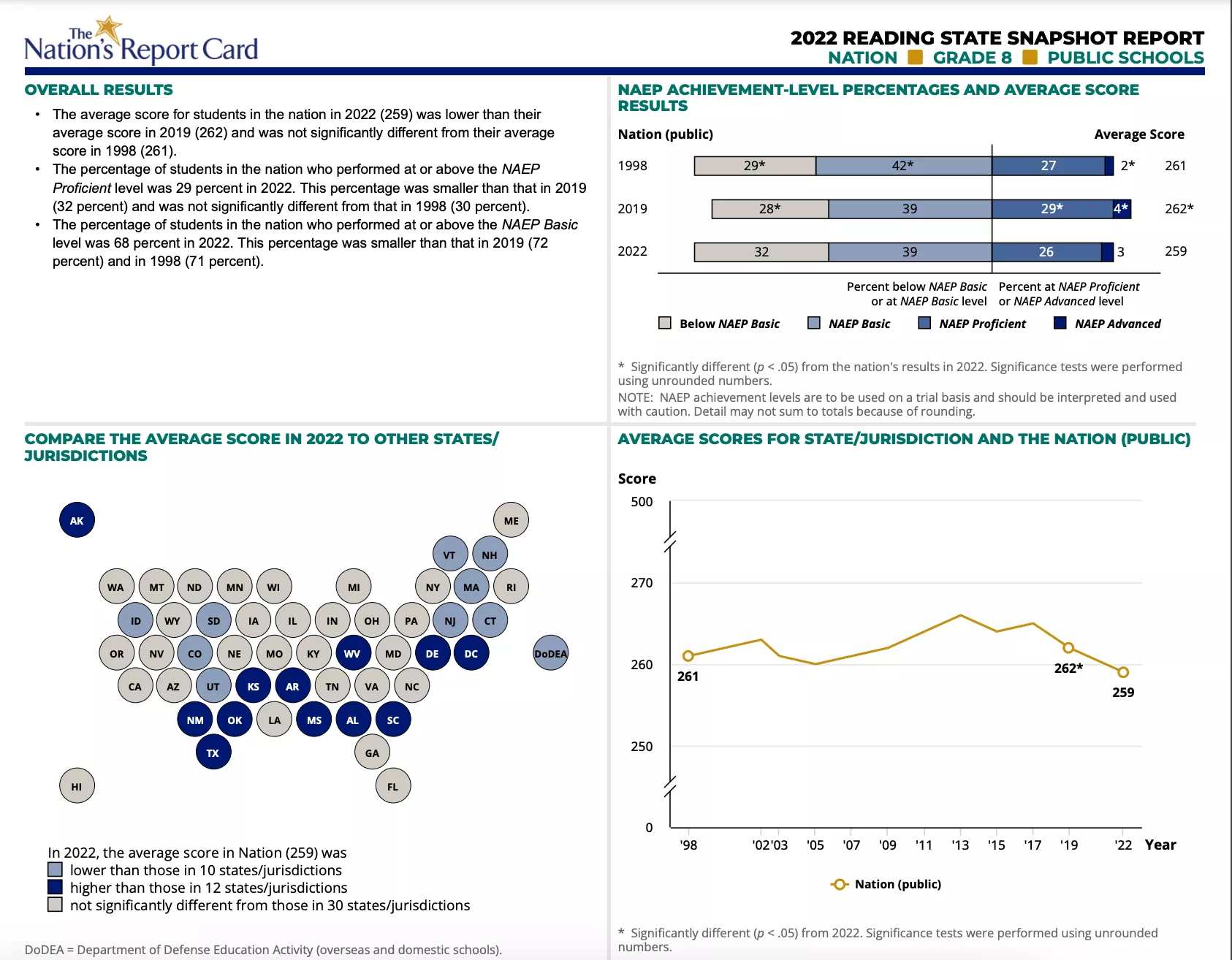Reading is the foundation of all learning. It’s the key that unlocks knowledge in every subject, from mathematics and science to history and literature. Yet, recent data from the National Assessment of Educational Progress (NAEP) paints a disconcerting picture about reading proficiency in the United States.
The NAEP, often referred to as the “Nation’s Report Card,” has indicated a steady decline in reading scores among American students. In its most recent report, a significant proportion of students across multiple grade levels were found to be performing below the proficient level. These declining scores, particularly in the foundational years, signal a systemic issue that needs immediate attention.

So, where do we begin addressing this crisis? Two crucial aspects emerge: early childhood education and the role of parents in children’s reading journeys.
Studies have consistently shown that the brain is most receptive to learning during the early years. The neural pathways formed during these formative years set the stage for lifelong learning. By introducing structured reading programs in early childhood education, we can ensure that children get a head start. They develop not only the skills to decode words but also an inherent love for reading.
Parents play a pivotal role in their child’s education. When parents actively participate, especially in reading, they reinforce the learning that occurs in school. Children who are read to at home are more likely to develop a richer vocabulary, better comprehension skills, and an intrinsic motivation to read. Beyond the tangible benefits, reading together fosters a bond between parents and children, making learning a shared journey.
Understanding the crucial role of early education and parental involvement, the initiative ‘Storybooks’ has taken a bold step forward to address the reading crisis.
Storybooks aims to revolutionize the way children and parents approach reading. With an extensive collection of interactive and engaging stories, it taps into the natural curiosity of children, making reading a fun activity rather than a chore. The platform is designed keeping in mind the diverse needs of young readers, catering to different reading levels and interests.
But how exactly does Storybooks plan to make a difference?
Storybooks believes in active learning. The platform offers stories that are not just to be read, but experienced. Interactive elements, animations, and sound effects immerse the reader, ensuring better retention and understanding.
Children have varied interests, and one size doesn’t fit all. Storybooks curates a vast array of stories from different genres, cultures, and reading levels. Every child finds something they resonate with, ensuring they are intrinsically motivated to read.
Storybooks isn’t just for children; it’s a resource for parents. With tips, guides, and reading strategies, it equips parents to support their children’s reading journey effectively.
While the US reading scores are a primary concern, Storybooks has a vision to improve foundational reading skills globally. By making the platform accessible to readers around the world, it aims to create a global community of young readers.
The decline in US reading scores, as shown by the NAEP data, is undoubtedly alarming. However, with concerted efforts from stakeholders, including institutions like Storybooks, there’s hope. By emphasizing the importance of early childhood education and parental involvement, and by providing the resources and tools to make reading both fun and educational, we can chart a course to a future where every child is a proficient reader. Not just in the US, but around the world.